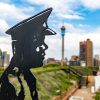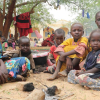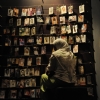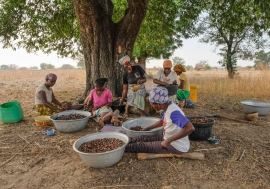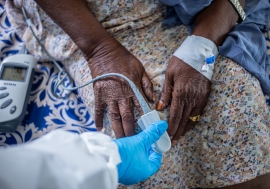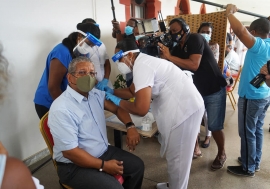Winding path to decent housing for South Africa’s poor
Winding path to decent housing for South Africa’s poor
 “We are waiting for houses,” says a resident of Soweto’s Motsoaledi shantytown, standing by her vintage wood-burning stove.
“We are waiting for houses,” says a resident of Soweto’s Motsoaledi shantytown, standing by her vintage wood-burning stove.SOWETO — Along the side of a bumpy, dusty road in Motsoaledi sits a concrete stand supporting a water pipe and faucet tap. It is one of 48 taps installed by the government throughout the informal shack settlement, says Cat, a young man who serves as guide. That number might sound impressive, except that there are 40,000 people living in Motsoaledi and the taps are their only clean water source. In a few cases where residents are too frail to fetch water from a tap, explains Cat, “we laid pipes to their houses.”
The shantytown — named after anti-apartheid hero Elias Motsoaledi — is within Soweto, South Africa’s largest black township. Besides lacking an adequate water system, it has no electricity — although tall high-tension pylons stand along the periphery. Residents must rely on paraffin stoves and candles for cooking and light, and live in constant danger of fires among the shacks built of wood, cardboard and corrugated metal sheeting. During heavy rains many shacks leak and the entire area is prone to flooding. There is refuse collection, however, organised by a residents’ committee, says Cat.
The inhabitants of Motsoaledi know they are poor. Right across the nearby Chris Hani Road are brick houses of somewhat better-off Sowetans and just a short walk to the west is the new Maponya Mall, with trendy coffee bars and restaurants. Motsoaledi’s poverty, contrasting so starkly with signs of improvement elsewhere in Soweto, has bred resentment. Only a little more than a year ago, Motsoaledi’s youths exploded in angry protests to demand government action to improve conditions in the settlement.
The authorities finally seem to be moving. On 23 March, just three days before this writer’s visit to Motsoaledi, Mayor Amos Masondo of metropolitan Johannesburg (which includes central Johannesburg, Soweto and other surrounding townships) presided over a ground-breaking ceremony for the construction of 2,750 new homes. With their cost heavily subsidised, they will go to registered Motsoaledi residents. Eventually, the project to upgrade and “formalize” the settlement will include new roads, sanitation, a better water system, electricity connections and additional homes.
For now, says an elderly resident in her tiny three-room shack, “We are waiting for the houses.”
Housing backlog
Many other poor South Africans are also waiting. Although the Department of Human Settlements reports that the government has built some 2.7 million low-cost houses over the past 15 years, there is still an estimated backlog of 2 million more. At an average of six people per family, that leaves some 12 million people in dire need of houses. Some currently live in sub-standard dwellings in the established townships, but many are in 2,700 informal settlements across the country.
When Nelson Mandela became South Africa’s first democratically elected president in 1994, he proclaimed housing for all an “unbreakable promise.” There was an initial burst of activity to build new houses under the government’s broad Reconstruction and Development Programme (RDP). While the RDP subsequently faded from view as the government shifted its priorities to attracting global trade and investment, the construction of the small “RDP houses” has continued, although at a markedly slower pace.
Meanwhile, South Africa’s urban areas are coming under enormous strain. The end of apartheid saw the demise of the old “pass laws” that had restricted black urban residency. Once those controls ended, people streamed into Johannesburg, Cape Town, Durban and other major centres in search of jobs, sharply accelerating urban growth and outstripping the housing supply.
At the same time, the government’s economic policy shifts exposed domestic industry to intense competition from foreign goods, leading to widespread job losses. The sluggish economy weakened the ability of municipal governments to collect local taxes and fees, in turn further undermining their ability to provide basic water, electricity and other services. Corruption took a toll, with local elected officials and bureaucrats often the target of demonstrators charging graft, favouritism and embezzlement.
Inequality and anger
The difficult circumstances are not felt equally. Visible racial disparities have persisted despite the end of legal segregation. Many whites — and a number of better-off blacks — have moved out of the central cities and now live in lush, well-serviced and high-security suburbs, far from the squalor of the townships and shack settlements.
Conditions are getting better in some townships, at least among residents with assets or who earn enough to qualify for home-improvement loans. Compared with just a decade ago, the signs are evident in Soweto. Many houses now have roofs of red tile, instead of metal sheeting. More have extensions, second storeys and other upgrades.
Yet for the poorest South Africans, even a tile roof seems like a dream. Their demands generally have been simple: for liveable houses, clean water, basic sanitation and electricity.
Often their frustrations have spilled out into the streets. Over the past decade, police reports indicate, South Africa has experienced an average of 8,000–9,000 marches, rallies and other demonstrations per year. Nine out of ten are peaceful. But the rest — frequently in shack settlements or other especially poor areas — have brought clashes with police. “The only way the government notices us is when we express our anger and rage,” one protester complained to reporters.
Ramping up delivery
The government of President Jacob Zuma has made some efforts to show that it is listening — and responding. He and some of his government ministers have visited a few troubled shantytowns. In a state of the nation address this February, the president specifically cited the grievances of a resident of an informal settlement in Bekkersdal, southwest of Johannesburg, who complained that her community has no services, while a suburb across the road has all basic amenities.
“There are 1.2 million households living in the country’s 2,700 informal settlements,” President Zuma admitted. He pledged that by 2014, some 400,000 more households would have both security of tenure and basic services such as water, sanitation and electricity. He also emphasized plans to stimulate job-creation, including an expanded public works programme to provide 4.5 million short-term jobs.
By 2010, annual government spending on housing delivery stood at R10.9 billion, more than twice the amount budgeted five years earlier. The government is not only putting out more money for houses and housing subsidies, Human Settlements Minister Tokyo Sexwale notes. Its overall approach has also widened. “We don’t just build houses anymore,” he says. “That thing is not working. We are building human settlements.... People must have clinics, police stations and places where children can play, and we are involving communities in that.”
Given the scale of the problem, Mr. Sexwale acknowledges, achieving decent housing for all will be a challenge. “It’s going to take us time. But we will get there.”
—Africa Renewal online



